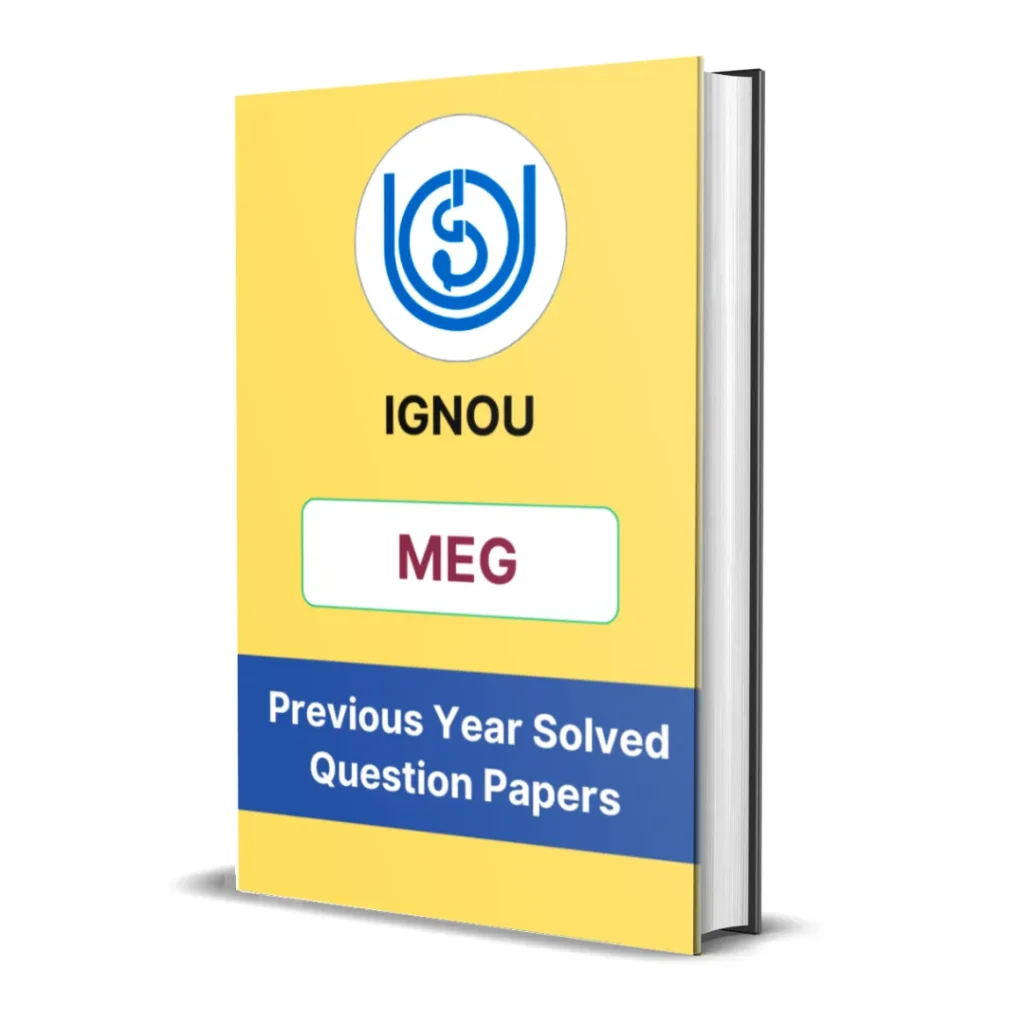IGNOU MEG-05 Block 7 Summary | Deconstruction
- Last Updated On August 14, 2025
Table of Contents
Here you will get the detailed summary of IGNOU MEG 5 Block 7 – Deconstruction.
We have provided the summary of all units starting from unit 1 to unit 6.

Introduction
IGNOU MEG-5 Block 7 focuses on Deconstruction, an influential and often controversial approach to literary theory that challenges fixed meanings, binary oppositions, and the stability of language. Emerging in the late 20th century, Deconstruction redefined how texts are read and interpreted, emphasizing ambiguity, contradiction, and the instability of meaning. Drawing initially from Structuralism and reacting against it, the theory was spearheaded by Jacques Derrida and spread across disciplines—from philosophy and literature to cultural studies. This block introduces the conceptual foundations of Deconstruction, its theoretical evolution, and its practical applications to poetry, drama, and broader critical discourse.

Unit 1 – Roots: New Criticism and Structuralism
This unit traces the philosophical and theoretical foundations of Deconstruction by examining its relationship with New Criticism and Structuralism.
-
New Criticism focused on close reading and textual autonomy, emphasizing internal coherence and unity.
-
Structuralism, influenced by linguist Ferdinand de Saussure, viewed language as a structured system of signs where meaning is derived from difference.
While both approaches emphasized the structure of the text over external contexts, Deconstruction emerged as a critique of their assumptions:
-
New Criticism’s belief in organic unity was questioned.
-
Structuralism’s idea of stable signifier-signified relationships was challenged.
This unit sets the stage for understanding Deconstruction as a critical response to earlier literary theories that tried to pin down meaning as fixed or hierarchical.

Unit 2 – Beginning Deconstruction
This unit introduces Jacques Derrida, the founder of Deconstruction, and lays out his key theoretical interventions.
Key concepts:
-
Différance: A coined term suggesting that meaning is always deferred and dependent on differences. It emphasizes that language never fully captures fixed meaning.
-
Logocentrism: The Western tendency to privilege speech over writing, or presence over absence, is critiqued.
-
Binary Oppositions: Derrida shows how Western thought relies on hierarchical binaries (e.g., male/female, good/evil, presence/absence) and how these can be deconstructed.
Derrida’s method:
-
Looks at internal contradictions, silences, and ambiguities in texts.
-
Shows how texts undermine their own authority.
This unit clarifies that Deconstruction is not about destroying meaning, but about revealing its multiplicity and instability.
Unit 3 – Implications
This unit discusses the theoretical, philosophical, and interpretative implications of Deconstruction.
Major implications include:
-
There is no final, absolute meaning in texts.
-
Interpretation becomes open-ended, with multiple valid readings.
-
Readers are active participants in constructing meaning.
It also explores how Deconstruction has affected:
-
Philosophy: Challenging foundational truths and systems.
-
Literary criticism: Shifting focus from authorial intent to textual play and multiplicity.
-
Ethics and politics: Examining how ideologies are embedded in language and meaning.
This unit positions Deconstruction as a method of reading that is deeply skeptical, yet productive, allowing readers to engage with texts in complex, critical ways.

Unit 4 – Deconstructing Poetry
This unit illustrates how Deconstruction can be applied to poetry, a genre known for ambiguity and layered meanings.
Key ideas:
-
Poems often resist singular interpretations, making them ideal for Deconstructive reading.
-
Language in poetry is figurative, symbolic, and paradoxical, which aligns with the Deconstructive view that meaning is never fixed.
-
A poem’s surface coherence can mask underlying tensions, contradictions, or silences.
Examples and approaches:
-
Examining metaphors, symbols, and paradoxes to reveal multiple layers of meaning.
-
Focusing on what is unsaid or excluded as much as what is present.
This unit shows that Deconstruction does not destroy poetic beauty; rather, it opens up new interpretive possibilities by embracing ambiguity.
Unit 5 – Deconstructing Drama
This unit explores the Deconstructive reading of dramatic texts, where dialogue, action, and structure create complex layers of meaning.
Approach:
-
Questioning authority, hierarchy, and coherence in dramatic structure.
-
Looking for disruptions in character identity, plot progression, and thematic clarity.
Deconstruction in drama involves:
-
Highlighting contradictory motivations of characters.
-
Analyzing language and silences in dialogues.
-
Challenging the closure of endings.
This unit emphasizes that drama, like poetry, can destabilize the reader’s expectations and that Deconstruction draws out these tensions to reveal hidden ideological assumptions or textual fractures.

Unit 6 – Re-Assessing Deconstruction
This concluding unit evaluates the strengths and criticisms of Deconstruction.
Strengths:
-
Offers deep textual analysis and interpretive flexibility.
-
Challenges dogmatic or one-dimensional readings.
-
Encourages critical thinking about language, power, and meaning.
Criticisms:
-
Seen as too abstract or nihilistic.
-
Accused of promoting relativism—if meaning is always unstable, how can we make judgments?
-
Difficult language and methodology make it hard to access for beginners.
Despite criticisms, the unit affirms that Deconstruction remains a vital critical tool in literary studies and beyond, reshaping the way we think about texts, meaning, and interpretation.